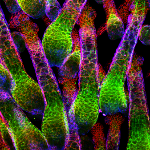What’s your favourite PLOS Genetics issue image?
PLOS Genetics is celebrating its ten year anniversary in July. Over the last decade, we have seen some eye-catching issue images and we would like to know which one is your favourite. The winning image will then be featured on the PLOS Genetics’ homepage and Twitter account during the journal’s tenth anniversary week.
Take a look at the five images below, and let us know which is your favourite (or tell us about one you like which isn’t included) by taking the following survey: https://www.surveymonkey.com/r/2X6R2XZ
Journal issue images are chosen by the Editors-in-Chief each month, and this selection was picked by the journal staff here in Cambridge, UK.
The last day of the survey is Friday 24th July, so vote soon!






[…] Source: Google Genetic News […]
[…] PLOS Genetics is celebrating its ten year anniversary in July. Over the last decade, we have seen some eye-catching issue images and we would like to know which one is your favourite. The winning image will then be featured on … Continue reading » […]
[…] PLOS Biologue Skip to content ← What’s your favourite PLOS Genetics issue image? […]
I like the fourth one. It’s like a candy. But I also like last one. It’s colorful. Em, it’s really hard to choose.
Caroline
http://www.creativebiomart.net/
I prefer the third one. The glossiness is very good